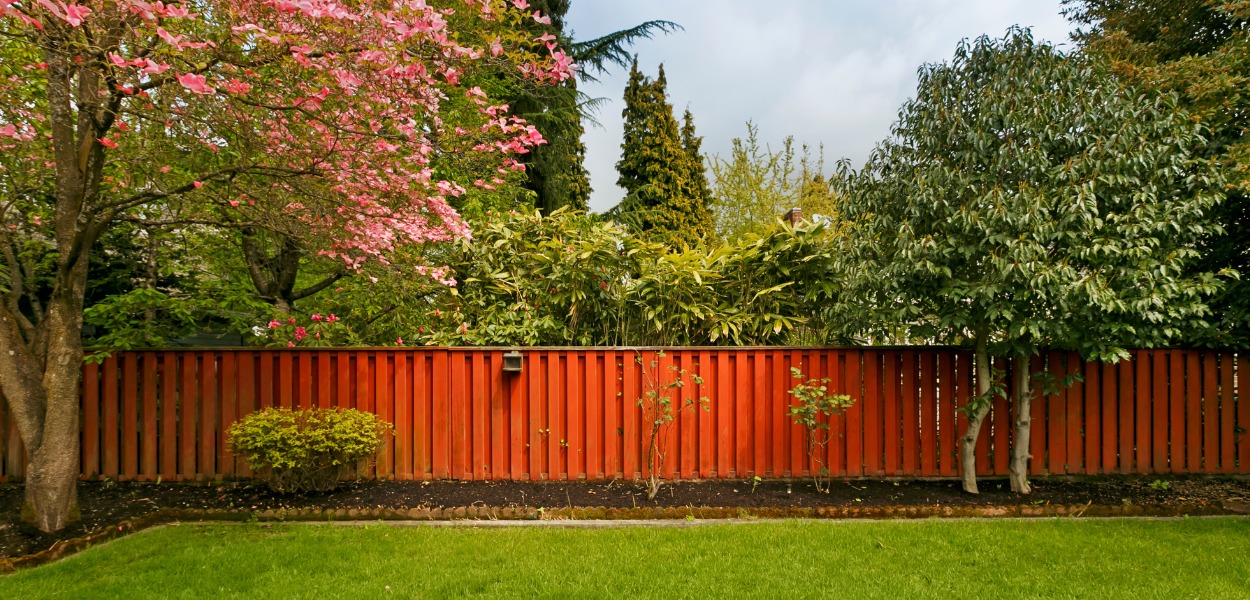All Categories
Featured
Mounting a fencing around your residential property can enhance privacy, security, and aesthetic appeals. Before getting began, it's vital to identify whether you require a license for the setup. Different locations have varying laws, and comprehending what's required will certainly help make sure that your fence is lawful, secure, and constructed according to neighborhood criteria. Right here's a guide to assist you browse the permitting procedure for fence installment.
Why Are Allows Called for? Authorizations are called for to guarantee that the installment of your fencing meets regional building regulations and zoning legislations. These regulations are in location to keep the security, appearance, and capability of properties in your area. Additionally, permits aid prevent disagreements with next-door neighbors regarding home lines, fencing height, and other structural details.
Neighborhood authorities need licenses to keep an eye on things like visibility at intersections, public safety and security, and possible damage to energies like pipes or electrical lines. The procedure aids maintain your fencing job certified with safety and lawful criteria.
Types of Authorizations You Might Require. The precise permits needed can vary relying on your location and the specifics of your project. Below are one of the most typical sorts of licenses you may require:
Structure Permit. Lots of cities and regions call for a structure permit for fences that surpass a particular height, generally over 6 feet. This permit guarantees that your fencing abides by structural criteria, specifically if it's made from certain materials such as concrete, metal, or block. Building licenses are additionally required when your fencing influences the total landscape, like developing an audio obstacle or blocking a sightline.
Zoning Authorization. Zoning authorizations are issued to make certain that your fencing abides by local zoning regulations. These legislations may control where fencings can be positioned on your residential property (e.g., yard, front, or side), exactly how high they can be, and whether they can be set up near roads or walkways. Zoning laws are established to maintain the general appearances of areas and maintain traffic security.
Setback Authorization. Some locations have trouble regulations that determine how much a fencing must be from the building line, road, or specific public areas. Setback licenses are designed to make sure that your fence doesn't conflict with surrounding residential properties or public locations. A home survey might be called for to verify building lines before getting this kind of license.
HOA Approval. If you stay in an area governed by a Homeowners Association (HOA), you may require to get authorization from the HOA prior to setting up a fence. HOAs usually have strict standards about the kind of fence admitted the neighborhood, including its height, shade, and material. Constantly contact the HOA prior to beginning your job to stay clear of any type of problems.
How to Request a Fencing License. The procedure for getting a license normally involves a number of actions:
Research Citizen Regulations. Beginning by checking your city or area's site to figure out the particular demands for fencing installation. You might need to go to the neighborhood planning or building division personally for even more in-depth information.
Prepare Your Application. The majority of cities will certainly require an application, that includes information concerning your prepared fencing, such as:
![]()
The kind of fencing product (timber, vinyl, chain-link, and so on) The planned elevation of the fencing. The place and measurements of the fence. A home study (to confirm residential property lines) Send the Application. After finishing the application, submit it to the regional structure or zoning workplace. You may be called for to pay a charge depending upon your area and the dimension of your fencing. Charges can vary, but they usually cover the cost of refining your demand and reviewing your strategies.
Await Authorization. Once your application is submitted, the neighborhood authorities will review your strategies to guarantee they meet zoning and building demands. This process can take anywhere from a few days to several weeks, relying on the intricacy of the task and the quantity of license requests in your area.
![]()
If Necessary),Evaluation (. In some instances, you might need to arrange an examination after the fencing is installed to guarantee it fulfills the called for requirements. Your regional workplace will certainly allow you recognize if this action is necessary.
When You Do Not Need a Permit,. Not every fence installment requires a permit. Some scenarios where you might not need an authorization include:
Setting up a fencing that's under a specific height (usually 3-4 feet for front lawns) Replacing an existing fence with one that is the exact same elevation and product. Setting up a short-lived fencing (e.g., for building or gardening) Also if your task seems little, it's constantly advisable to inspect with local authorities to make sure you're complying with the proper process.
Consequences of Not Getting an Authorization. Setting up a fence without the required license can bring about substantial repercussions, including fines, elimination of the fencing, and expensive reinstallation. In some instances, local authorities might need you to change the fencing if it does not meet code needs. Additionally, not obtaining a license might produce conflicts with next-door neighbors, especially if the fencing is put inaccurately or breaches neighborhood height laws.
Conclusion. Before setting up a fence, it is very important to research the certain allowing requirements in your location. If a license is essential and to make sure that you're following the proper procedure, call your local structure or zoning division to find out. By securing the proper permits, you'll make sure and avoid legal issues that your fence installation is risk-free, certified, and easy.
Why Are Allows Called for? Authorizations are called for to guarantee that the installment of your fencing meets regional building regulations and zoning legislations. These regulations are in location to keep the security, appearance, and capability of properties in your area. Additionally, permits aid prevent disagreements with next-door neighbors regarding home lines, fencing height, and other structural details.
Neighborhood authorities need licenses to keep an eye on things like visibility at intersections, public safety and security, and possible damage to energies like pipes or electrical lines. The procedure aids maintain your fencing job certified with safety and lawful criteria.
Types of Authorizations You Might Require. The precise permits needed can vary relying on your location and the specifics of your project. Below are one of the most typical sorts of licenses you may require:
Structure Permit. Lots of cities and regions call for a structure permit for fences that surpass a particular height, generally over 6 feet. This permit guarantees that your fencing abides by structural criteria, specifically if it's made from certain materials such as concrete, metal, or block. Building licenses are additionally required when your fencing influences the total landscape, like developing an audio obstacle or blocking a sightline.
Zoning Authorization. Zoning authorizations are issued to make certain that your fencing abides by local zoning regulations. These legislations may control where fencings can be positioned on your residential property (e.g., yard, front, or side), exactly how high they can be, and whether they can be set up near roads or walkways. Zoning laws are established to maintain the general appearances of areas and maintain traffic security.
Setback Authorization. Some locations have trouble regulations that determine how much a fencing must be from the building line, road, or specific public areas. Setback licenses are designed to make sure that your fence doesn't conflict with surrounding residential properties or public locations. A home survey might be called for to verify building lines before getting this kind of license.
HOA Approval. If you stay in an area governed by a Homeowners Association (HOA), you may require to get authorization from the HOA prior to setting up a fence. HOAs usually have strict standards about the kind of fence admitted the neighborhood, including its height, shade, and material. Constantly contact the HOA prior to beginning your job to stay clear of any type of problems.
How to Request a Fencing License. The procedure for getting a license normally involves a number of actions:
Research Citizen Regulations. Beginning by checking your city or area's site to figure out the particular demands for fencing installation. You might need to go to the neighborhood planning or building division personally for even more in-depth information.
Prepare Your Application. The majority of cities will certainly require an application, that includes information concerning your prepared fencing, such as:

The kind of fencing product (timber, vinyl, chain-link, and so on) The planned elevation of the fencing. The place and measurements of the fence. A home study (to confirm residential property lines) Send the Application. After finishing the application, submit it to the regional structure or zoning workplace. You may be called for to pay a charge depending upon your area and the dimension of your fencing. Charges can vary, but they usually cover the cost of refining your demand and reviewing your strategies.
Await Authorization. Once your application is submitted, the neighborhood authorities will review your strategies to guarantee they meet zoning and building demands. This process can take anywhere from a few days to several weeks, relying on the intricacy of the task and the quantity of license requests in your area.

If Necessary),Evaluation (. In some instances, you might need to arrange an examination after the fencing is installed to guarantee it fulfills the called for requirements. Your regional workplace will certainly allow you recognize if this action is necessary.
When You Do Not Need a Permit,. Not every fence installment requires a permit. Some scenarios where you might not need an authorization include:
Setting up a fencing that's under a specific height (usually 3-4 feet for front lawns) Replacing an existing fence with one that is the exact same elevation and product. Setting up a short-lived fencing (e.g., for building or gardening) Also if your task seems little, it's constantly advisable to inspect with local authorities to make sure you're complying with the proper process.
Consequences of Not Getting an Authorization. Setting up a fence without the required license can bring about substantial repercussions, including fines, elimination of the fencing, and expensive reinstallation. In some instances, local authorities might need you to change the fencing if it does not meet code needs. Additionally, not obtaining a license might produce conflicts with next-door neighbors, especially if the fencing is put inaccurately or breaches neighborhood height laws.
Conclusion. Before setting up a fence, it is very important to research the certain allowing requirements in your location. If a license is essential and to make sure that you're following the proper procedure, call your local structure or zoning division to find out. By securing the proper permits, you'll make sure and avoid legal issues that your fence installation is risk-free, certified, and easy.
Latest Posts
Don’t Miss Special Auto Repair Specials in Chicago at Montclare Auto Repair
Published May 28, 25
1 min read
Check Out the Leading Auto Repair Deals in Montclare, Chicago
Published May 26, 25
1 min read
Explore Special Auto Repair Offers in Chicago at Montclare Auto Repair
Published May 25, 25
1 min read
More
Latest Posts
Don’t Miss Special Auto Repair Specials in Chicago at Montclare Auto Repair
Published May 28, 25
1 min read
Check Out the Leading Auto Repair Deals in Montclare, Chicago
Published May 26, 25
1 min read
Explore Special Auto Repair Offers in Chicago at Montclare Auto Repair
Published May 25, 25
1 min read